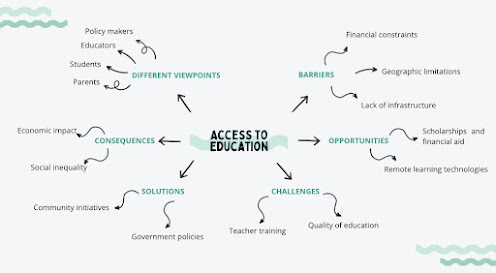Exploring Mind Mapping: A Powerful Technique for Idea Generation and Organization
Mind mapping is a visual technique that helps in organizing thoughts, generating ideas, and facilitating problem-solving. Developed by Tony Buzan in the 1960s, mind maps are structured diagrams that represent words, ideas, tasks, or concepts linked around a central theme. This technique utilizes both the creative and logical parts of the brain, making it a versatile tool for various applications, from brainstorming to project planning.
Origin and Theoretical Foundations
The concept of mind mapping can be traced back to the ea
rly works of cognitive psychologists who studied how humans process information. Tony Buzan popularized the technique, emphasizing that our brains naturally think in a non-linear fashion. Mind mapping reflects this non-linear thought process, allowing users to visually organize information in a way that mirrors their cognitive processes.
Practical Applications of Mind Mapping
- Creative Writing: Writers often face the challenge of organizing their thoughts and ideas. Mind maps can help by visually outlining plot points, character relationships, and themes. For instance, J.K. Rowling has mentioned using mind maps to outline the complex plot lines of the Harry Potter series.
- Problem Solving: In business contexts, mind mapping can facilitate brainstorming sessions. Teams can use mind maps to identify the root causes of problems, explore potential solutions, and outline action plans. Companies like Apple have utilized mind mapping in product development to innovate and refine their ideas.
- Project Development: Project managers can use mind maps to break down tasks, set timelines, and identify dependencies. This visualization aids in keeping team members on the same page regarding project goals and milestones.
Step-by-Step Guide to Creating a Mind Map
- Start with a Central Idea: Write down the main theme or topic in the center of the page. This could be a project name, a question, or a concept you want to explore.
- Add Branches: From the central idea, draw branches for major subtopics or categories that relate to the main theme. These branches can represent different aspects of the topic.
- Expand with Details: For each branch, add smaller branches that detail specific points, ideas, or tasks. Use keywords, images, or symbols to convey information succinctly.
- Use Colors and Images: To enhance memory retention and engagement, incorporate colors, icons, and images. This not only makes the mind map visually appealing but also aids in categorization.
- Review and Revise: Once the mind map is complete, review it for clarity and coherence. Make adjustments as needed to ensure that it accurately represents your thoughts.




Comentarios
Publicar un comentario